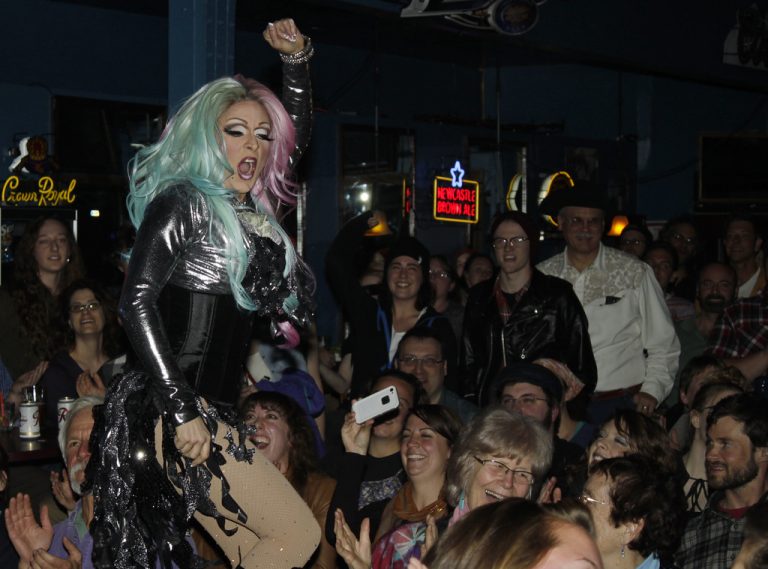The Necessity of LGBTQ+ Artists in Today’s Culture: A Conversation With Amethysta Herrick
In today’s day and age, one where LGBTQ+ artists such as Chappell Roan can play massive sets at the Coachella music festival, the voices and experiences of LGBTQ+ artists are becoming increasingly important. One of those voices is Amethysta Herrick, a transgender woman and musician. Her story is one that truly delves into the necessity of LGBTQ+ artists in shaping culture and fostering a greater sense of acceptance and understanding.
A Journey of Discovery and Transformation
While she still does not claim to be a professional musician, Amethysta has been a lifelong one. Originally, she had wanted to become a rock guitarist but instead, she chose to study biology and chemistry, eventually working up to a PhD in Analytical Chemistry and a job in software.
Amethysta began transitioning at the age of 52, leading her to embark on a path toward self-expression and authenticity that allowed her the freedom to leave behind a successful career in technology of 25 years that has been draining her in order to focus on writing and music. “For 52 years, I was a man waiting to die,” she reflects. “Now I am a vibrant woman excited to live.”
Now, her writing is focused on the origin and nature of identity and gender. She is also very sure of the fact that “life is immeasurably better for having transitioned.”

The Evolution of LGBTQ+ Representation
Over the last few years, Amethysta has noticed a significant shift in the visibility and acceptance of LGBTQ+ artists. In the 1970s, the only artist she saw pushing boundaries was David Bowie. By the 80s, artists like Annie Lennox, Boy George, and Pete Burns had become well-recognized. Amethysta recalls that “as a young transgender girl, those three were a huge help in exploring my own gender.”
Since then, she has seen the music industry embrace a more diverse range of voices and experiences. Artists like Lady Gaga and Kim Petras have both made a profuse impact on not only LGBTQ+ culture but also the mainstream.
“The music industry follows (or creates, maybe) trends, and seeing more artists play with gender and sexuality indicates people and the industry are becoming more open to experiences outside cisnormativity and heteronormativity,” Amethysta claims.
Inspiration and Empowerment Through Art
For Amethysta, music has always been a vital means of self-expression. As societal attitudes toward LGBTQ+ artists have evolved, so has her artistic journey. While she does not consider herself a professional musician, the act of creating art and writing music has always been a part of her life.
Yet, after her transition, the music inadvertently changed for the better. She states, “Since transitioning gender, my music has changed. It’s become more sensuous. As an example, there was a song I wrote when I was 18 or 19 – the late 1980s, anyway. I never really liked how the song sounded, even though I’ve recorded it several times and played it with a few bands. When I transitioned, I did vocal training so I would sound more feminine, and on a lark, I played this old song in my new voice. What I discovered is the song itself wasn’t bad. It simply wasn’t being sung by the person who truly wrote it. Sung by Amethysta, the song is good, maybe great. When we find our identity and express it completely, our engagement with life reaches tremendous depth.”
Now, Amethysta hopes that through her music she can inspire others to embrace their identities fully and authentically. She believes“Each of us must engage with both throughout life, and any art that promotes exploring identity, gender, or sexuality can only be valuable for humanity.”
A Vision for the Future
Looking ahead, Amethysta hopes to see even more continued progress in the acceptance and celebration of LGBTQ+ artists in mass culture. “Art represents humanity, not the other way around,” she asserts. “we need to hear the human experience has no limits through art.”
In Conclusion
The necessity of LGBTQ+ artists in today’s culture cannot be overstated. Their stories, contributions, and perspectives undeniably enrich our collective experience. Such consistent exposure continuously helps to challenge the heteronormative norms and inspires empathy. As we continue to celebrate and support LGBTQ+ artists like Amethysta, we then move closer to a world where diversity is not just accepted but is celebrated. And hopefully, that creates a culture where everyone can live and create authentically.
Additionally, Amethysta Herrick can be found here, and all of her work can be found on Gender Identity Today!



